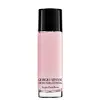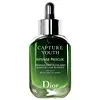What's inside
What's inside
 Key Ingredients
Key Ingredients

 Benefits
Benefits

 Concerns
Concerns

 Ingredients Side-by-side
Ingredients Side-by-side

Water
Skin ConditioningGlycerin
HumectantPropylene Glycol
HumectantDipropylene Glycol
HumectantCitrus Grandis
Butylene Glycol
HumectantPEG-20
HumectantPEG/PPG/Polybutylene Glycol-8/5/3 Glycerin
HumectantTamarindus Indica Seed Polysaccharide
Skin ConditioningMyrothamnus Flabellifolia Leaf Extract
EmollientPPG-26-Buteth-26
Skin ConditioningPEG-40 Hydrogenated Castor Oil
EmulsifyingBis-PEG-18 Methyl Ether Dimethyl Silane
EmollientPotassium Chloride
Trehalose
HumectantMethyl Gluceth-20
HumectantMethylsilanol Mannuronate
Skin ConditioningSodium Hyaluronate
HumectantSodium Lactate
BufferingRhamnose
HumectantAdenosine
Skin ConditioningMagnesium Sulfate
Ammonium Acryloyldimethyltaurate/Vp Copolymer
Disodium Phosphate
BufferingTetrasodium EDTA
Citric Acid
BufferingBiosaccharide Gum-1
HumectantXanthan Gum
EmulsifyingT-Butyl Alcohol
PerfumingBHT
AntioxidantTocopherol
AntioxidantSorbic Acid
PreservativePhenoxyethanol
PreservativeChlorphenesin
AntimicrobialCI 14700
Cosmetic ColorantCI 15985
Cosmetic ColorantLinalool
PerfumingHexyl Cinnamal
PerfumingBenzyl Salicylate
PerfumingParfum
MaskingWater, Glycerin, Propylene Glycol, Dipropylene Glycol, Citrus Grandis, Butylene Glycol, PEG-20, PEG/PPG/Polybutylene Glycol-8/5/3 Glycerin, Tamarindus Indica Seed Polysaccharide, Myrothamnus Flabellifolia Leaf Extract, PPG-26-Buteth-26, PEG-40 Hydrogenated Castor Oil, Bis-PEG-18 Methyl Ether Dimethyl Silane, Potassium Chloride, Trehalose, Methyl Gluceth-20, Methylsilanol Mannuronate, Sodium Hyaluronate, Sodium Lactate, Rhamnose, Adenosine, Magnesium Sulfate, Ammonium Acryloyldimethyltaurate/Vp Copolymer, Disodium Phosphate, Tetrasodium EDTA, Citric Acid, Biosaccharide Gum-1, Xanthan Gum, T-Butyl Alcohol, BHT, Tocopherol, Sorbic Acid, Phenoxyethanol, Chlorphenesin, CI 14700, CI 15985, Linalool, Hexyl Cinnamal, Benzyl Salicylate, Parfum
Water
Skin ConditioningGlycerin
HumectantButylene Glycol
HumectantDimethicone
EmollientPropanediol
SolventMethyl Gluceth-20
HumectantPhenoxyethanol
PreservativePPG-26-Buteth-26
Skin ConditioningArgania Spinosa Kernel Oil
EmollientPEG-40 Hydrogenated Castor Oil
EmulsifyingParfum
MaskingAcrylates/C10-30 Alkyl Acrylate Crosspolymer
Emulsion StabilisingDimethicone/Vinyl Dimethicone Crosspolymer
Skin ConditioningPentylene Glycol
Skin ConditioningSodium Hydroxide
BufferingAmodimethicone
Aphanothece Sacrum Polysaccharide
AbsorbentCarbomer
Emulsion StabilisingCentella Asiatica Leaf Extract
Skin ConditioningDisodium EDTA
Adenosine
Skin ConditioningCalophyllum Inophyllum Seed Oil
AntimicrobialSodium Tocopheryl Phosphate
AntioxidantIris Florentina Root Extract
MaskingBHT
AntioxidantCI 19140
Cosmetic ColorantCI 14700
Cosmetic ColorantTocopherol
AntioxidantWater, Glycerin, Butylene Glycol, Dimethicone, Propanediol, Methyl Gluceth-20, Phenoxyethanol, PPG-26-Buteth-26, Argania Spinosa Kernel Oil, PEG-40 Hydrogenated Castor Oil, Parfum, Acrylates/C10-30 Alkyl Acrylate Crosspolymer, Dimethicone/Vinyl Dimethicone Crosspolymer, Pentylene Glycol, Sodium Hydroxide, Amodimethicone, Aphanothece Sacrum Polysaccharide, Carbomer, Centella Asiatica Leaf Extract, Disodium EDTA, Adenosine, Calophyllum Inophyllum Seed Oil, Sodium Tocopheryl Phosphate, Iris Florentina Root Extract, BHT, CI 19140, CI 14700, Tocopherol
Ingredients Explained
These ingredients are found in both products.
Ingredients higher up in an ingredient list are typically present in a larger amount.
Adenosine is in every living organism. It is one of four components in nucleic acids that helps store our DNA.
Adenosine has many benefits when used. These benefits include hydrating the skin, smoothing skin, and reducing wrinkles. Once applied, adenosine increases collagen production. It also helps with improving firmness and tissue repair.
Studies have found adenosine may also help with wound healing.
In skincare products, Adenosine is usually derived from yeast.
Learn more about AdenosineBHT is a synthetic antioxidant and preservative.
As an antioxidant, it helps your body fight off free-radicals. Free-radicals are molecules that may damage your skin cells.
As a preservative, it is used to stabilize products and prevent them from degrading. Specifically, BHT prevents degradation from oxidation.
The concerns related to BHT come from oral studies; this ingredient is currently allowed for use by both the FDA and EU.
However, it was recently restricted for use in the UK as of April 2024.
Learn more about BHTButylene Glycol (or BG) is used within cosmetic products for a few different reasons:
Overall, Butylene Glycol is a safe and well-rounded ingredient that works well with other ingredients.
Though this ingredient works well with most skin types, some people with sensitive skin may experience a reaction such as allergic rashes, closed comedones, or itchiness.
Learn more about Butylene GlycolCi 14700, also known as Red No. 4, is a synthetic red dye derived from petroleum. It is water soluble.
Glycerin is already naturally found in your skin. It helps moisturize and protect your skin.
A study from 2016 found glycerin to be more effective as a humectant than AHAs and hyaluronic acid.
As a humectant, it helps the skin stay hydrated by pulling moisture to your skin. The low molecular weight of glycerin allows it to pull moisture into the deeper layers of your skin.
Hydrated skin improves your skin barrier; Your skin barrier helps protect against irritants and bacteria.
Glycerin has also been found to have antimicrobial and antiviral properties. Due to these properties, glycerin is often used in wound and burn treatments.
In cosmetics, glycerin is usually derived from plants such as soybean or palm. However, it can also be sourced from animals, such as tallow or animal fat.
This ingredient is organic, colorless, odorless, and non-toxic.
Glycerin is the name for this ingredient in American English. British English uses Glycerol/Glycerine.
Learn more about GlycerinMethyl Gluceth-20 is a humectant. Humectants help draw moisture from the air to your skin.
It is created by combining polyethylene glycol with glucose.
Parfum is a catch-all term for an ingredient or more that is used to give a scent to products.
Also called "fragrance", this ingredient can be a blend of hundreds of chemicals or plant oils. This means every product with "fragrance" or "parfum" in the ingredients list is a different mixture.
For instance, Habanolide is a proprietary trade name for a specific aroma chemical. When used as a fragrance ingredient in cosmetics, most aroma chemicals fall under the broad labeling category of “FRAGRANCE” or “PARFUM” according to EU and US regulations.
The term 'parfum' or 'fragrance' is not regulated in many countries. In many cases, it is up to the brand to define this term.
For instance, many brands choose to label themselves as "fragrance-free" because they are not using synthetic fragrances. However, their products may still contain ingredients such as essential oils that are considered a fragrance by INCI standards.
One example is Calendula flower extract. Calendula is an essential oil that still imparts a scent or 'fragrance'.
Depending on the blend, the ingredients in the mixture can cause allergies and sensitivities on the skin. Some ingredients that are known EU allergens include linalool and citronellol.
Parfum can also be used to mask or cover an unpleasant scent.
The bottom line is: not all fragrances/parfum/ingredients are created equally. If you are worried about fragrances, we recommend taking a closer look at an ingredient. And of course, we always recommend speaking with a professional.
Learn more about ParfumPeg-40 Hydrogenated Castor Oil is derived from castor oil and polyethylene glycol (PEG). It is used as a emollient and emulsifier.
As an emulsifier, it helps prevent ingredients from separating. It also helps make the other ingredients more soluble; it is often used to solubilize fragrances. This increases spreadability and elongates shelf life in a product.
Emollients help soothe and soften the skin. They do this by creating a protective film on your skin. This barrier helps trap moisture and keeps your skin hydrated. Emollients may be effective at treating dry or itchy skin.
This ingredient may or may not be vegan, depending on the source.
Peg-40 Hydrogenated Castor Oil may not be fungal-acne safe. We recommend speaking with a professional if you have any questions or concerns.
Learn more about PEG-40 Hydrogenated Castor OilPhenoxyethanol is a preservative that has germicide, antimicrobial, and aromatic properties. Studies show that phenoxyethanol can prevent microbial growth. By itself, it has a scent that is similar to that of a rose.
It's often used in formulations along with Caprylyl Glycol to preserve the shelf life of products.
We don't have a description for PPG-26-Buteth-26 yet.
Tocopherol (also known as Vitamin E) is a common antioxidant used to help protect the skin from free-radicals and strengthen the skin barrier. It's also fat soluble - this means our skin is great at absorbing it.
Vitamin E also helps keep your natural skin lipids healthy. Your lipid skin barrier naturally consists of lipids, ceramides, and fatty acids. Vitamin E offers extra protection for your skin’s lipid barrier, keeping your skin healthy and nourished.
Another benefit is a bit of UV protection. Vitamin E helps reduce the damage caused by UVB rays. (It should not replace your sunscreen). Combining it with Vitamin C can decrease sunburned cells and hyperpigmentation after UV exposure.
You might have noticed Vitamin E + C often paired together. This is because it is great at stabilizing Vitamin C. Using the two together helps increase the effectiveness of both ingredients.
There are often claims that Vitamin E can reduce/prevent scarring, but these claims haven't been confirmed by scientific research.
Learn more about TocopherolWater. It's the most common cosmetic ingredient of all. You'll usually see it at the top of ingredient lists, meaning that it makes up the largest part of the product.
So why is it so popular? Water most often acts as a solvent - this means that it helps dissolve other ingredients into the formulation.
You'll also recognize water as that liquid we all need to stay alive. If you see this, drink a glass of water. Stay hydrated!
Learn more about Water